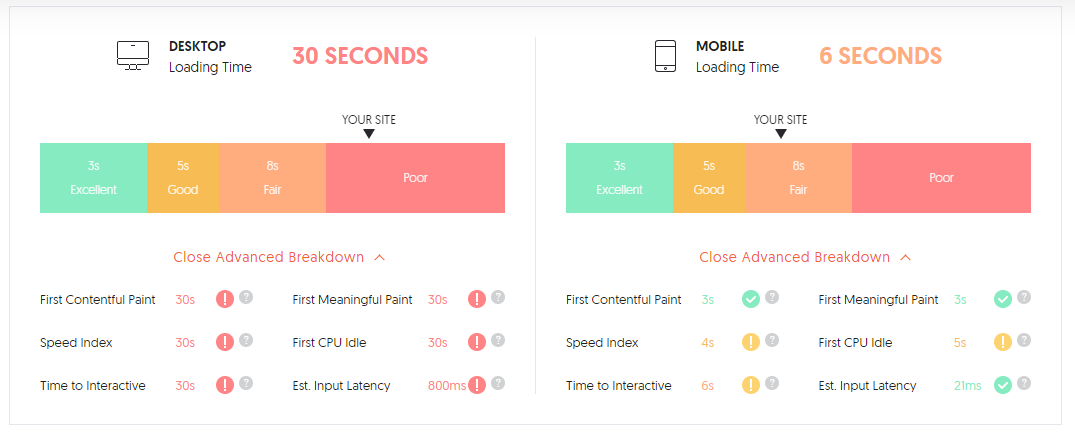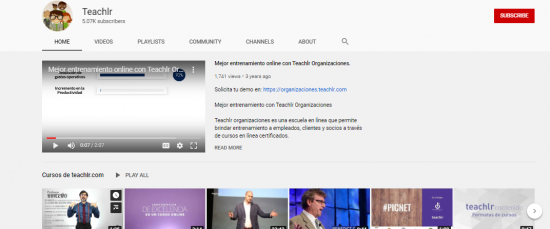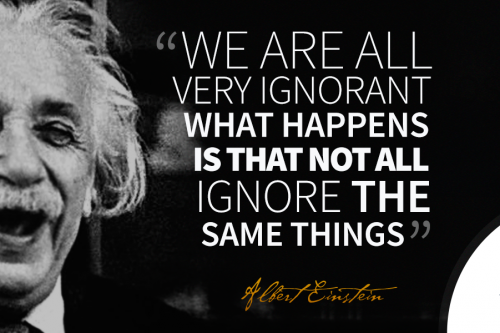Are you struggling with your marketing efforts for your e-learning venture?
E-mail marketing or paid ads don’t work for you well enough?
It’s time you tried inbound marketing and its strategies to promote your e-learning business.
How Effective Is Inbound Marketing?
If you’re confused about the term ‘inbound marketing’, there’s a different perspective you can take to understand it better.
You probably already know how effective content marketing, social media marketing, and search engine optimization are. You can say that inbound marketing is a collective term for these strategies, aimed at positive branding and increasing online exposure.
What do the stats say about the effectiveness of inbound marketing?
- Inbound marketing is ten times more effective for lead conversion than outbound marketing (continued advertising and promotions).
- Content marketing costs 62% less than traditional marketing efforts (paid advertising, for instance), and produces 54% more leads.
- 79% of companies who have an inbound marketing strategy in place report a positive ROI for their inbound marketing efforts.
Do customers prefer inbound marketing?
Yes. Even B2B customers (68% of respondents) prefer researching a company independently online before they make their decision about purchasing the product. Since e-learning ventures often work with both B2B and B2C customers, it is important to take into account that both groups would first look at the content you produce before making up their minds about choosing your platform.
So now, let’s discuss the main strategies of inbound marketing that your e-learning venture can benefit from.
- SEO and Its Peculiarities
Let’s start with the foundation of inbound marketing – search engine optimization.
SEO is also the top priority for more than 60% of companies who have an inbound marketing strategy in place. And you can understand why. Proper search engine optimization is responsible for your search rankings, and no matter how good your content is, if it’s not optimized, no one will see it.
SEO is an auxiliary tool that helps you rank your content higher. And, since e-learning is a highly competitive domain, optimizing your content is not just unavoidable, it’s vital.
Search engine optimization is also a domain that changes very fast. Google and other search engines constantly work on improving the ranking system and introducing new features.
Currently, two strategies retain a strong impact on how content gets optimized – keyword research and mobile SEO optimization.
Keyword Research
Keyword research is the foundation of search engine optimization. However, today it doesn’t look the way it used to, with several trends having a great impact on how content is ranked.
- Search Intent
Long gone is that time when it was enough to put together a list of keywords for your content and call it a day. Now, Google focuses more on the intent that searchers put behind the keywords that they put into a search bar.
So, let’s say a user is searching for “learn HTML”. There may be multiple search intents behind this keyword:
– I’m looking for an online HTML course
– I’m looking for a course somewhere near my location that provides HTML training
– I want to purchase online HTML course
– I’m looking for online guides or textbooks to learn HTML
This list can go on, and all these queries need to be considered when you will be creating a list of keywords. Google wants to provide its users only with relevant content, and this content should be in line with search intent.
- LSI Keywords
Diving deeper into the topic of keywords, here we have one of the latest SEO trends – LSI keywords.
Why do they matter for your e-learning content?
LSI keywords are what Google uses to have a deeper understanding of what message you want to spread with your content.
Let’s say you have a blog about e-learning. When scanning your content, Google will not only consider ‘e-learning’ as the main keyword but will also dive deeper, searching for related terms, like:
– learning methods
– inclusivity
– online courses
– online education
– e-learning technology
These are only a few examples of LSI keywords that can help Google recognize that your content, in fact, corresponds to what you claim it to be. This way, Google ensures delivering not only high-quality but also relatable content to its users.
- Mobile SEO Optimization
Today, nearly half of your traffic comes from mobile devices. So, it shows a necessity to optimize your content for the users of mobile devices as well.
Mobile SEO is, first of all, about optimizing page loading speed.
The optimal page loading time for mobile devices is 3-5 seconds. This allows you to retain the attention of the visitors, who, most likely, will leave if the page loads longer than 5 seconds.
For your e-learning venture, optimizing content for mobile devices is also an integral step. Since the users of e-learning platforms login to them mostly from smartphones and tablets, optimized videos and visuals, as well as responsive templates, are a must for proper mobile SEO.
- Social Media Marketing: Choosing a Platform for Brand Exposure
In inbound marketing, social media play an important role, being one of the main channels through which you can market your e-learning venture.
It is also the quickest way to share your content. “According to our research, 68% of Internet users go to a brand’s social media first to research the product”, says Camilla Dickinson, the head of marketing at The Word Point, an international translation company.
However, using all social media platforms available for your inbound marketing strategy isn’t the right approach. Neither is choosing the platform, where you have the most followers.
The choice of social media platform would depend on how your followers interact with your content. This would be your most active platform for your inbound marketing efforts.
How do you determine your most active social media platform?
You can use social data from the Analytics tools inside each of your social media platforms.
Let’s take a Facebook and a Twitter page of an e-learning venture (anonymous) to compare the activity:
Although it’s an e-learning startup, you can already tell the difference between how the venture’s audience responds to its content on Facebook compared to Twitter. From this data, you can conclude that Facebook is a clear choice for this venture’s inbound marketing strategy.
The same data can help you manage your followers, get their demographic data, feedback, and use it to produce content.
- Content Marketing: The Freedom (And Struggle) of Choice
As we’ve started talking about content a little bit in the previous section, let’s see how you can employ content marketing to promote your e-learning brand.
Today, apart from social media content, e-learning ventures can benefit from 2 main content types. Let’s take a look at them and their benefits for your e-learning business.
- Blogging
Today, each self-respecting business has a blog. E-learning ventures and online teachers should have a blog, too, as it is a credible way to showcase your knowledge and expertise (remember that not only searchers look for it, but search engines as well).
For an e-learning venture, having a blog is also a way to build the network and become the authority in this domain, as you generate leads by providing value to your readers.
How effective is blogging from the perspective of inbound marketing?
According to Optinmonster, companies, who have a professional blog in place, get 97% backlinks. This means that the more authoritative you get on the market, the more attention your business receives.
Blogging also perfectly integrates with social media. Optinmonster claims that 95.9% of companies promote their blogs through social media and their social media profiles on their blogs.
For an e-learning business, blogging is one of the most common ways to promote their services as well as establish trust with their audience.
- Video Content
Today, many e-learning ventures do video content. They usually upload the videos on their YouTube channels, where they not only promote their business but also upload the trailers of upcoming courses, interviews with the teachers, etc.
Video production, however, is a more labor-intensive process than blogging. It involves a lot of steps, including a script, video production, and editing, for which you need a big group of people.
Is it worth it?
If you have big plans for the future of your e-learning business, then yes.
Videos are gradually overshadowing blogging in their popularity. Biteable statistics show that 59% of users would rather watch a video than read a text, and 72% of respondents say they would rather learn about a product through a video than with the help of text.
In terms of content perception, the same source says that people retain a message 95% via video compared to only 10% via text.
For an e-learning venture, where getting and retaining the attention of a user is vital for the business, video content cannot remain ignored.
How to Choose the Content that Works for You?
Today, e-learning ventures have a freedom of choice between many types of content, but it is also a struggle, as they are afraid to lose the segments of their audience, who would prefer other types of content.
The secret is in achieving the golden middle and trying to cater to the main content preferences of your audience. You can learn more about them via social data on your social channels as well as Google Analytics that provides you with social data from your blog.
Wrapping Up
Inbound marketing is, for sure, a multifaceted concept, and so many things need to be taken into account to make your inbound marketing efforts successful.
Inbound marketing mostly deals with content for branding purposes, but producing content is not enough to make your brand successful.
SEO optimization that follows the latest trends in keyword research and optimization, as well as choosing the right social media and producing content that resonates with your audience – all these efforts should not be overlooked.
Inbound marketing remains one of the most effective strategies for e-learning business, delivering steady results, generating leads, retaining users, and building a brand image.
Hopefully, the strategies that we covered in this article will help you get more insights on what a successful inbound marketing strategy should look like, and how you can do it for your e-learning venture.
–Erica Sunarjo
Erica Sunarjo got her start as a freelance writer for a number of online companies – e-commerce and writing services, including Best Writers Online. Since then, she has branched out to copywriting for multichannel marketing campaigns for clients from a variety of sectors and has become an expert on creative and successful campaigns.








